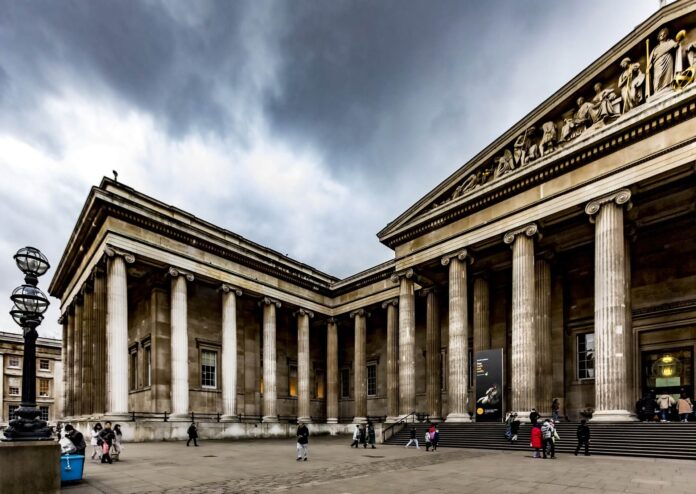
The pandemic has severe consequences for the cultural sector. Museums around the world are selling objects of their collections to survive. This goes against their own rules and triggers a heated debate.
Collecting and Deaccessioning: a Normal Process?
The most important tasks of museums are to collect and to preserve material items from the pasts of different cultures. Museums carry out research on the history of these items, and communicate and exhibit them to the public. Although museums do purchase objects on the art market (at least if they have enough funds to do so), the sale (“deaccessioning”) of these items is still frowned upon. Museums may only do so (preferably selling to other museums) if the objects are damaged or if the proceeds are immediately used to purchase new items, to enlarge or expand the collection. These guidelines are laid down in the Code of Ethics of the International Council of Museums (ICOM) and those of other museum associations.
The ICOM Code of Ethics states that “money or compensation received from the deaccessioning (…) should be used solely for the benefit of the collection and usually for acquisitions of that same collection”, not for running costs. However, currently running costs of museums are so high that many face severe problems.

Is Covid-19 Opening the Gate for New Deaccessioning Policies?
Just like any other institution, a museum has to pay for electricity and water, renovations and staff. Usually – regarding state-funded museums – a fixed budget covers these costs. However, regarding many expenses the institutions have to figure out themselves how to pay for them. And with visitor numbers plummeting, museums have to face the question of how to financially survive the upcoming months.
By the way, number 1.9 of the ICOM Code mentioned above states that “the governing body should ensure that there are sufficient funds to carry out and develop the activities of the museum”. However, this is not even true regarding many state-funded museums, which complain of chronic underfunding. In addition, there are private museums whose situation is even worse.
That’s why the AAMD, the US Association of Art Museum Directors, revised its guidelines on 15 April 2020. Museums deaccessioning objects from their collections in order to pay for general expenses will not be subject to sanctions until 10 April 2022. This moratorium is meant to help keep these institutions alive in the first place. The Brookly Museum was one of the first museums to announce that it will sell twelve works of art at Christie’s this fall, including works by Lucas Cranach the Elder, Gustave Courbet and Francesco Botticini. The museum does not want to reorganise its collection, it just wants to settle the bills.
Similar announcements were made in Great Britain and France. The Royal Academy of Arts in London is one of the most important cultural institutions of Great Britain. Having emerged from an artists’ association, they now promote artists themselves – without public aid. The Academy draws most of its funds from exhibitions. One of its top pieces is Michelangelo’s Taddei Tondo. And this very item is now to be sold – not for curatorial reasons, but to make up for the loss of income.
The Musée Rodin in Paris also faces a difficult situation. Being entirely devoted to the work of the artist Auguste Rodin, the museum is a state institution, however, it’s the only national museum in France that is completely self-financed. Prior to the pandemic, this concept had apparently worked out, however, visitor numbers plummeted by 70 percent during the pandemic. Now the museum announced that it will sell several bronze replicas of original pieces made of marble. Even though this is not the first time something like this happens, the need for additional proceeds has never been greater since the Musée Rodin will not benefit from the corona aid granted by the French government to national museums.
New Rules for Deaccessioning
In the USA, private museums have a long-standing tradition. That’s why they are not subject to such strict rules and can act quicker when they want to adapt their collecting strategies. In Europe, things are different. Therefore, reservations about the sale of objects for other purposes than acquiring new items are even greater. However, the developments on the art market are rather favourable: there has been such a strong increase in prices that museums can make a lot of money while acquiring top pieces that are difficult to afford anyway.
In a thriller written by British journalist and writer Peter Watson (who is an excellent connoisseur of the art market, by the way), a very unconventional pope wants to do good by selling works of art through auction houses. The result: Great Britain and Israel follow his example, which has dramatic consequences for the market. If you want to know how the story goes on, you should read it for yourself. There is definitely something we can learn from it: if someone starts deaccessioning, this might break the taboo.
Covid-19 may spark a new discussion in the world of museums. ICOM members are already discussing about re-defining the tasks of museums. Maybe they will also revise the rules regarding deaccessioning. Because no matter what we think of deaccessioning: we need clear and viable rules for everyone.
The Brooklyn Museum in New York already had to put 12 works up for auction to raise funds for the care of its collection, the New York Times reports.
You can find out more about how US museums are coping with the current situation in this article by the Washington Post.
And this is the AAMD resolution.
Here you can read the ICOM Code of Ethics for Museums.
Recently, we reported extensively about the current ICOM discussions about how to define the tasks of a museum.



